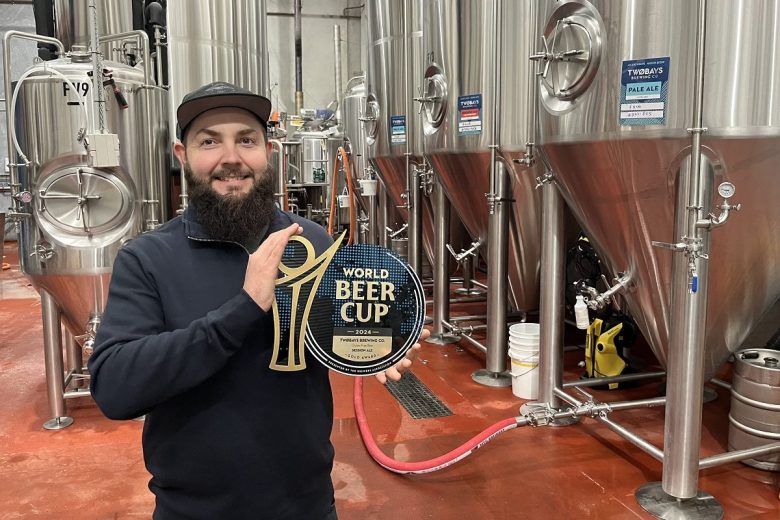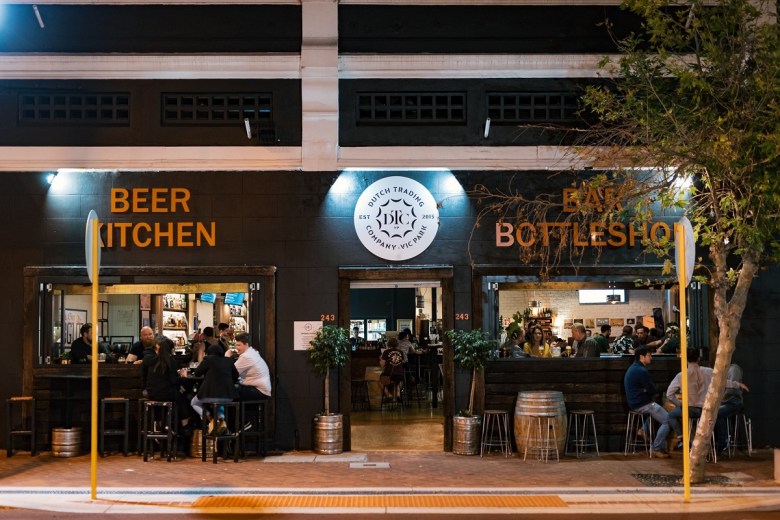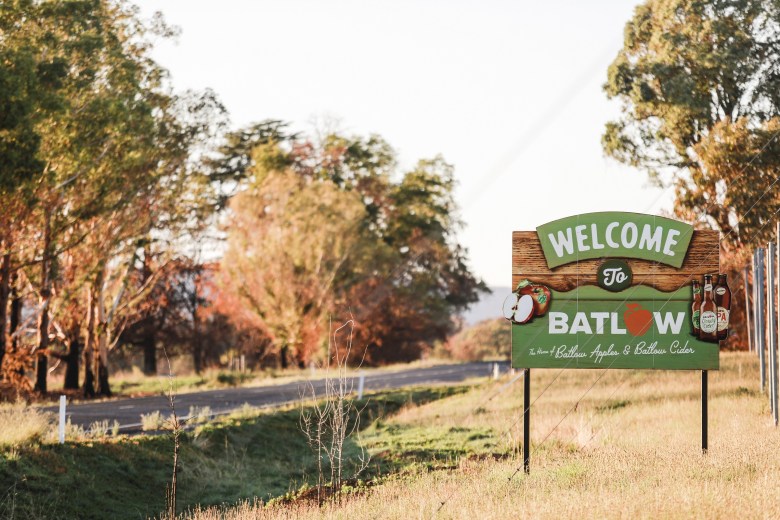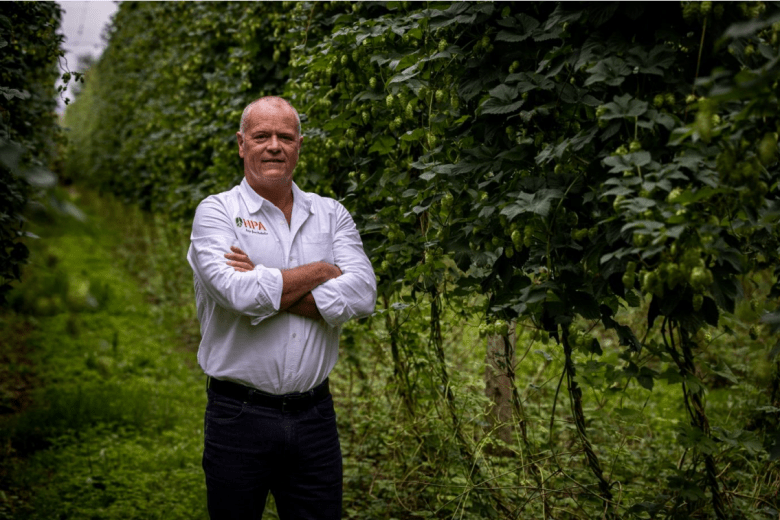 This week’s brewer spotlight highlights Kristian Martin, Head Brewer at dedicated gluten-free brewery Two Bays Brewing Co.
This week’s brewer spotlight highlights Kristian Martin, Head Brewer at dedicated gluten-free brewery Two Bays Brewing Co.  This week’s brewer spotlight highlights Kristian Martin, Head Brewer at dedicated gluten-free brewery Two Bays Brewing Co.
This week’s brewer spotlight highlights Kristian Martin, Head Brewer at dedicated gluten-free brewery Two Bays Brewing Co.  This week’s brewer spotlight highlights Kristian Martin, Head Brewer at dedicated gluten-free brewery Two Bays Brewing Co.
This week’s brewer spotlight highlights Kristian Martin, Head Brewer at dedicated gluten-free brewery Two Bays Brewing Co.  After nine years as a craft beer hub for WA, Dutch Trading Co. is closing, with the owners planning to transform the venue into something new.
After nine years as a craft beer hub for WA, Dutch Trading Co. is closing, with the owners planning to transform the venue into something new. 
The post 20 Award-Winning Fruit Mead Recipes appeared first on American Homebrewers Association.

The post Nominate Today: 2024 Homebrew Shop of the Year Award appeared first on American Homebrewers Association.

The post New This Year: Vote for Your Favorite AHA Member Deal appeared first on American Homebrewers Association.
 Part of the Northern Beaches Council’s Creative Open initiative, Freshie Palooza is a free, all-ages festival celebrating music and art.
Part of the Northern Beaches Council’s Creative Open initiative, Freshie Palooza is a free, all-ages festival celebrating music and art.  Launched in partnership with Lance 'Buddy' Franklin, the new product is Hahn's first zero carb beer.
Launched in partnership with Lance 'Buddy' Franklin, the new product is Hahn's first zero carb beer. 
The post Get Ready: Homebrew HQ at Great American Beer Festival appeared first on American Homebrewers Association.

The post Hose Clamp Rings, Geocaching and Road Trips appeared first on American Homebrewers Association.
Mike and Stephanie Butler of Olathe, KS, members of the Kansas City Bier Meisters homebrew club, won a gold medal in Category 12: Amber & Brown American Ale in the 2023 National Homebrew Competition Final Round in San Diego. The Butler's American Amber Ale earned gold out of 133 entries.
The post Challenge Accepted American Amber Ale appeared first on American Homebrewers Association.
 The partnership will continue to grow Brewmanity’s Melbourne presence, following the opening of its rooftop brewpub in March.
The partnership will continue to grow Brewmanity’s Melbourne presence, following the opening of its rooftop brewpub in March.  From Irish stout to hazy pale ales, Beer & Brewer rounds up the best non-alcoholic beers for Dry July.
From Irish stout to hazy pale ales, Beer & Brewer rounds up the best non-alcoholic beers for Dry July.  Capital Brewing Co has announced that it has bought one of Australia’s most renowned cider brands, Batlow Cider.
Capital Brewing Co has announced that it has bought one of Australia’s most renowned cider brands, Batlow Cider. 
The post Philly Sour Saison appeared first on American Homebrewers Association.
Andy and Danny are back with more beer talk, items of discussion include: Firestone Walker Invitational Beer Fest fallout talk. Backstage news from event. Anything new this year? Is there […]
The post Podcast EP 265 – FWIBF Fallout, Anchor, Ballast Point, GABFLOL & More! appeared first on The Full Pint - Craft Beer News.
 This week I take a look at fermentation considerations when brewing a very high gravity beer such as an Imperial Stout or Barley Wine. Last week in Part 1, I covered several methods for achieving a very high starting gravity. Selecting Your Yeast Now that you have a high gravity wort, you need to consider […]
This week I take a look at fermentation considerations when brewing a very high gravity beer such as an Imperial Stout or Barley Wine. Last week in Part 1, I covered several methods for achieving a very high starting gravity. Selecting Your Yeast Now that you have a high gravity wort, you need to consider […]  Tim Lord leaves behind a 19-year tenure at Hop Products Australia, in which he significantly transformed the business.
Tim Lord leaves behind a 19-year tenure at Hop Products Australia, in which he significantly transformed the business. Regardless of customs, environs, or condiments, beer is there to make a burger better.
The post Meat & Malt: Beer Makes Burgers Better appeared first on CraftBeer.com.

The post July/August 2024 Zymurgy Magazine Now Available appeared first on American Homebrewers Association.

The post July/August 2024 Zymurgy Magazine Links appeared first on American Homebrewers Association.
 Australian Beer Co’s Emma Walton shares lessons and highlights from 20 years of brewing experience across the UK and Australia.
Australian Beer Co’s Emma Walton shares lessons and highlights from 20 years of brewing experience across the UK and Australia. 
The post One Way or Another Guava Blonde Ale appeared first on American Homebrewers Association.
These movers and shakers are not only brewing top-notch beer, but are also making game-changing steps toward a craft beer industry that welcomes all.
The post Pride in Their Craft: LGBTQIA+ Brewers Build Community appeared first on CraftBeer.com.

The post Want Exclusive Access to Great American Beer Festival Presale Tickets and Discounts? appeared first on American Homebrewers Association.
 Scott Janish joins me this week to discuss mash hopping and steps he takes to control oxygen and enhance long term beer stability. Subscribe on iTunes to Audio version or Video version or Spotify or Google Play Download the MP3 File– Right Click and Save As to download this mp3 file. Your browser does not […]
Scott Janish joins me this week to discuss mash hopping and steps he takes to control oxygen and enhance long term beer stability. Subscribe on iTunes to Audio version or Video version or Spotify or Google Play Download the MP3 File– Right Click and Save As to download this mp3 file. Your browser does not […]  Leading marketing data and analytics business, Kantar, has named its most valuable global beer brands, with AB InBev dominating.
Leading marketing data and analytics business, Kantar, has named its most valuable global beer brands, with AB InBev dominating.  After a period of review and consultation Lion has made the ‘difficult decision’ to close its Malt Shovel Brewery.
After a period of review and consultation Lion has made the ‘difficult decision’ to close its Malt Shovel Brewery. 
The post 13 Belgian-style Witbier Homebrew Recipes appeared first on American Homebrewers Association.
(SAN DIEGO, CA) – Karl Strauss, San Diego’s longest continuously operating post-Prohibition brewing company, will release Tower X² Double IPA on draft and in four packs of 16-oz cans this Thursday at its […]
The post Karl Strauss Brewing Announces Release of Tower X² Double IPA appeared first on The Full Pint - Craft Beer News.
 This week I take a look at the brewing of very high gravity beers to include styles like Barley Wines and extreme Imperial Stouts. These beers require somewhat special handling as it can be hard to achieve the very high starting gravity and a good fermentation, and in addition they often require extensive aging. Very […]
This week I take a look at the brewing of very high gravity beers to include styles like Barley Wines and extreme Imperial Stouts. These beers require somewhat special handling as it can be hard to achieve the very high starting gravity and a good fermentation, and in addition they often require extensive aging. Very […]